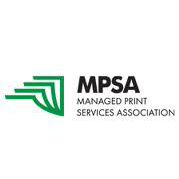USA retail giant Staples launches chemicals management policy
USA retail giant Staples launches chemicals management policy
Staples is committed to offering customers quality products that improve their work-life experiences while being safe for them and the environment. Some chemicals, while serving a useful function in products, may potentially pose hazards to human health or the environment.
This policy describes the actions Staples will take – in collaboration with their suppliers – to identify the presence of chemicals of concern1 in products and support innovations that result in an orderly transition to safer alternatives.
Scope and prioritization
This policy applies to all product brands owned by Staples and to national brand products sold through U.S. Staples Business Advantage, staples.com, and Quill.
Staple will implement this policy in a prioritized fashion based on product sales volumes, customer and other stakeholder concerns, the availability and feasibility of safer alternatives, and the latest scientific research.
Staples has created a Priority Chemicals of Concern List to help focus its efforts and those of its suppliers during the implementation of this policy. The list identifies both specific chemicals and chemical classes that are priorities for safer alternatives innovation. The list also indicates associated product categories that are a priority focus for Staples, including formulated products and certain types of articles.

Product design
According to Staple’s Chemical Policy, “We seek to work with product suppliers who are actively working to identify and use safer chemicals across their product portfolios while meeting key product performance needs. To support this objective, we will:
- share this policy and our Priority Chemicals of Concern List with our key suppliers;
- ask our suppliers to identify which products contain chemicals of concern and those that are below specific thresholds or free of intentionally added chemicals of concern;
- encourage our suppliers to work with their raw material suppliers to identify alternatives that are safer for our customers and the environment, using the most credible science and hazard evaluation tools available;
- encourage our suppliers to seek credible third-party certifications that support safer and more environmentally responsible chemistry for their products and help us promote certified products to our customers; and remain engaged in initiatives to advance green chemistry and encourage our suppliers to do the same.”







Leave a Comment
Want to join the discussion?Feel free to contribute!